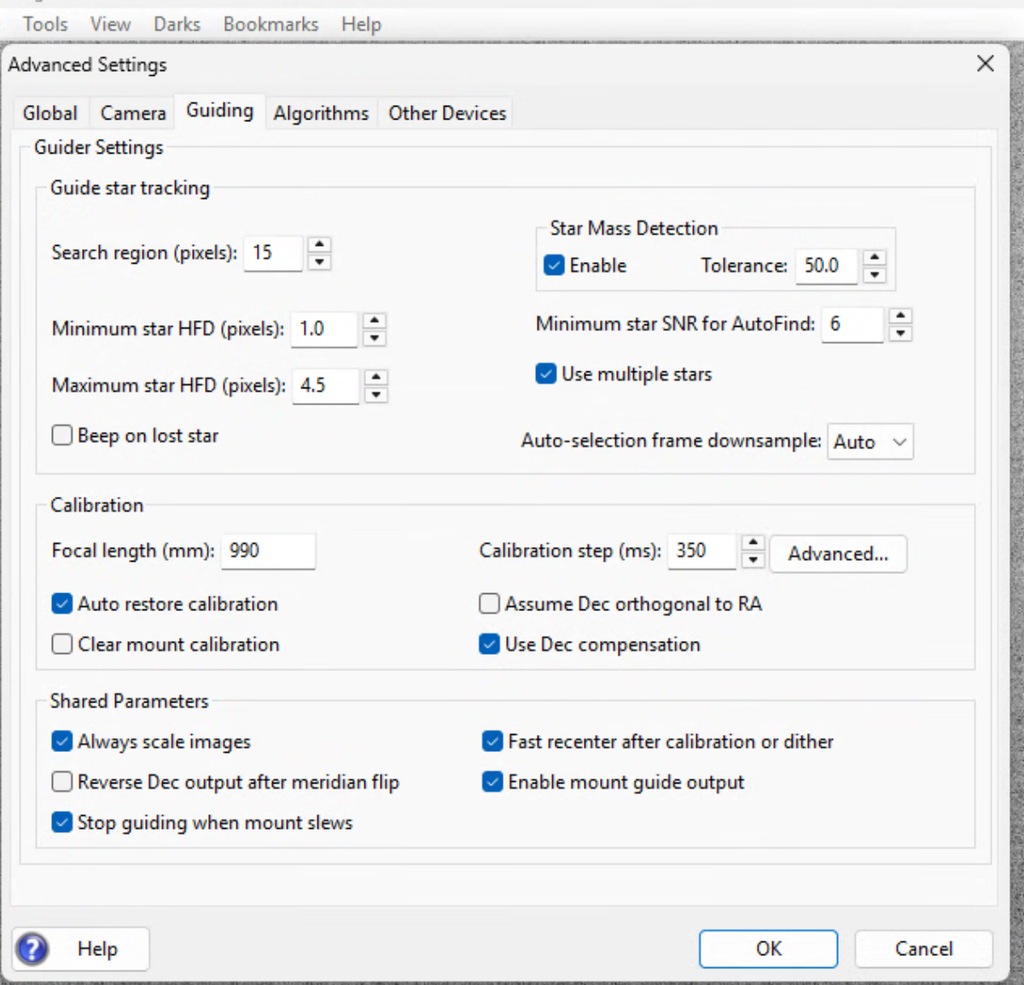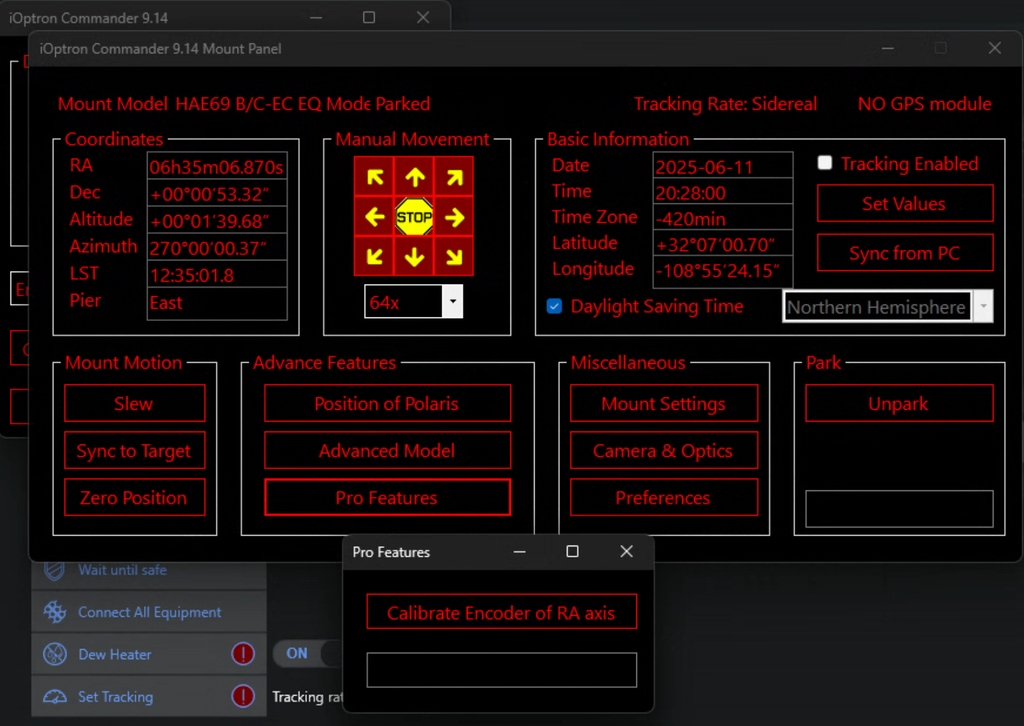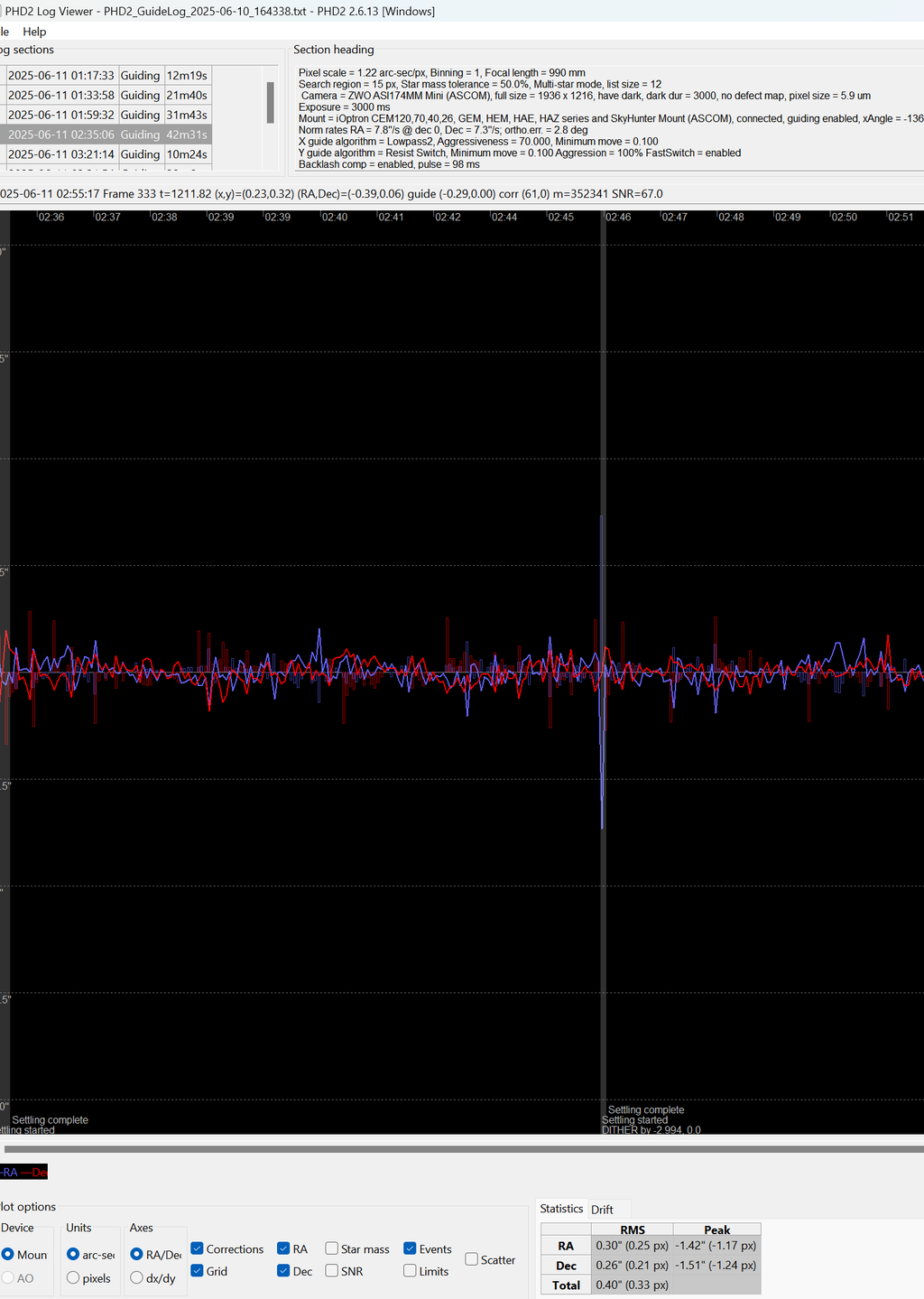Bob Rucker:
I thought I'd reach out to see if anyone can share their PHD2 settings for this mount. I've had good success using my ASIAIR Pro but I'm in the process of transitioning to a Primaluce Eagle 6 running NINA. It's been a frustrating transition as my guiding is averaging 0.50" with the ASIAIR and I'm struggling to keep it below 1' 00" using PHD2 with NINA. I'm using Sharpcap 2 for my polar alignment and making sure the alignment error is below 1' 00".
I did not check the encoders option on account of the encoder not being absolute like other high end mounts. My current settings are as follows:
RA
Hysteresis 10
Aggressiveness 70
Minimum Move 0.18
Max RA duration 2500
Declination
Lowpass 2
Aggressiveness 90
Minimum Move 0.28
Max Dec duration 2500
Dec guide mode auto
Backlash compensation is not selected as per the PHD2 analysis recommendation.
I've tried 1, 2, 3 and 4 second guide exposures but changing them did not make any difference in my guide error.
Thanks in advance!
I have the HAE69b EC for nearly a year and a half. Typically it will guide 0.3-0.5" unless the seeing is bad or the wind is strong. I typically leave it at 3 second exposures.
First thing you need to make sure of is that your guide camera focal length is correctly reported in PHD. Its in the second box under "calibration".:

Another thing you might want to consider doing is calibrate your RA encoder. Make sure you are properly homed and no cables would snag during the process because it will rotate east and west on the RA access quite a bit. You will find it under: "Pro Features".

Here are my guiding settings:

Here is a 40 minute stretch from last night which is typically how it looks:

Hope that helps






